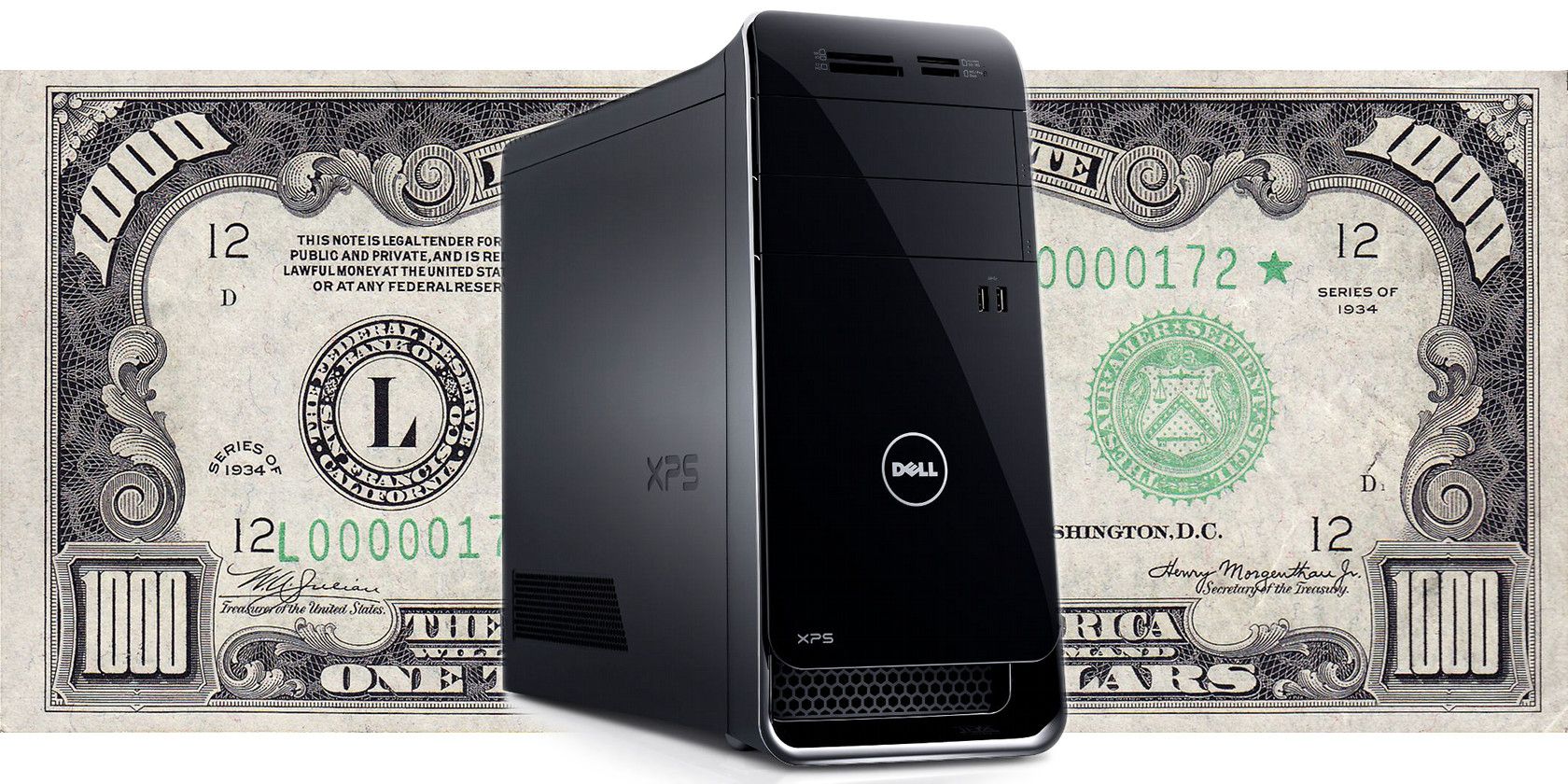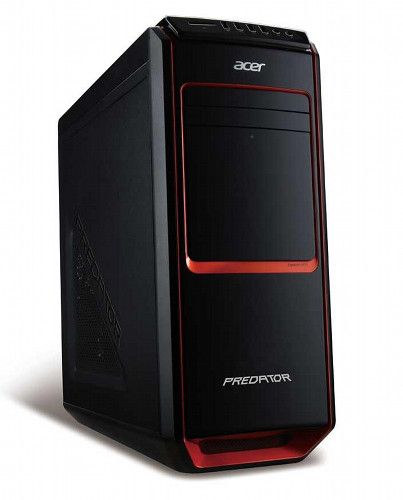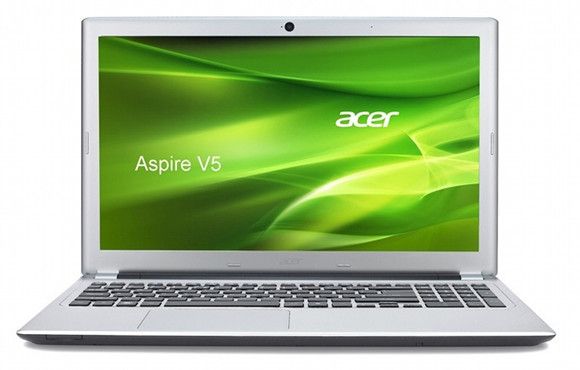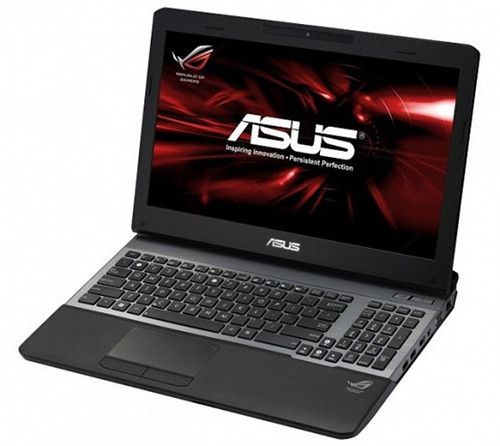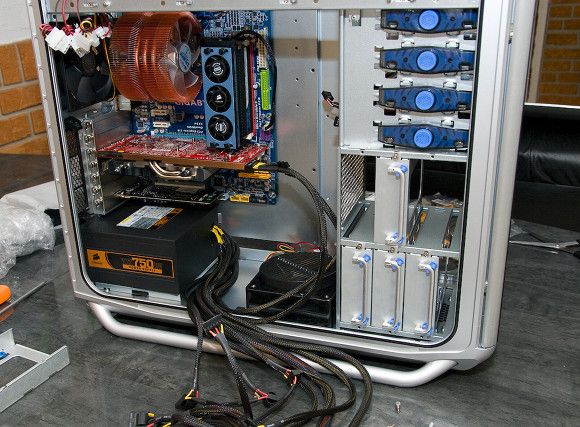Computer games are not as difficult to run as they once were, but they’re still among the most demanding tasks most users will ask of their PC. An inexpensive desktop or laptop still has little chance of running the latest-and-greatest, so would-be PC gamers have to ask themselves; how much can I, and should I, spend?
For many the $1000 mark is an important cut-off. Computers under this are generally considered affordable, even “mainstream,” while those exceeding it are looked at as luxurious items. The average selling price for a PC has meandered between $500 and $600 for the last five years, so even $1000 is a stretch for most buyers. But can you really buy decent gaming PC for less than a grand?
Desktops
If you want maximum gaming performance for your dollar, a desktop is the way to go. That’s always been true and always will be for as long as desktops exist as a category. Gamers will also be happy to know that there are a lot of options with discrete graphics cards for less than $1,000.
So what will your money buy you? The Acer Predator G3 is a good example. A basic version of this system, with an Nvidia GT 640 video card and Core i7-4770, can be had for $829.99. A system like this can generally be expected to play modern games at 1080p, though only at medium detail, and some very demanding games (like Civilization V and Metro: Last Light) probably won’t hit 60 frames-per-second. Other choices include the ASUS M51, Dell XPS 8700 and Alienware X51.
There’s no question that a reasonably capable gaming desktop can be yours for less than a grand, but we also should ask if spending a bit more results in even better value. The answer seems to depend on how much control you have over the build. Acer offers a better G3, for example, with a GTX 660 graphics card. But it also loads up on 32GB of RAM and more storage, upgrades that are unnecessary. As a result,the high-end G3 sells for around $1,400, which is still a good overall value, but way over budget.
Alienware’s X51, on the other hand, can be upgraded from an Nvidia GTX 645 to a GTX 670 without altering other components, so the price leaps by $350 for a total of $1,199. That’s a better deal because you only pay for upgrades that really matter.
While you can’t buy a desktop that guarantees 60 FPS at maximum detail in every game, you can play every game on the market with a $1,000 rig. Going beyond that price point will improve the performance and allow for more visual detail.
Notebooks
In the desktop market, spending around a grand is almost guaranteed to buy a system with some form of discrete video card. Notebooks are a different story. Many systems sell for well over $1,000 with only Intel integrated graphics, so finding an affordable option with gaming potential is difficult.
Laptops designed with gaming as their primary purpose are generally out of this budget. To find options you’ll instead have to turn to multimedia notebooks, systems that usually have a 15.6” display and come with a low-end discrete graphics card. Examples include the Acer Aspire V3/V5, the Toshiba Satellite S800 series, the Lenovo IdeaPad Y500 and the Samsung Series 5. All of these notebooks have variants with AMD or Nvidia discrete graphics for under $1,000.
Don’t expect any performance miracles. Systems like this generally ship with an Nvidia GeForce GT 740M/750M or an AMD Radeon 7670M/7330M. Discrete graphics like this will struggle to keep up with modern games, so you’ll generally be restricted to medium or high settings. The one saving grace is the fact inexpensive multimedia notebooks almost universally come with a 720p display, which in turn lowers demand on the GPU.
Your options are limited, so will spending more help? Yes, it can. The least expensive tier of budget gaming laptops from ASUS, Alienware, and MSI sells between $1,000 and $1,200. For that you’ll receive an Intel quad-core, a far better discrete graphics solution, and (usually) a 1080p display. Games will play at high to maximum detail despite the increased resolution, making the extra $200 to $300 money well spent.
Roll Your Own
There is a third way. If you have the skill, or you’d like to learn it, you can try putting together your own desktop gaming computer. This route can be trying, as you’ll be responsible for making sure the PC works. But success is rewarded with incredible performance for the price.
Rather than hashing together my own build, I’ll point you to something tried-and-true; The Tech Report’s system builder guide. Their current “sweet spot” build, the option they think provides the best bang-for-the-buck, prices out at $1,058. For that you can grab a quad-core processor, a Radeon HD 7870 video card, two terabytes of storage and a 120GB solid state drive, plus all the other miscellaneous components you need to make the PC work.
This rig can play any game at 1080p with near-maximum detail, and do so without breaking a sweat. Even if you downgrade the system slightly by selecting a less expensive motherboard or ditching the SSD, you’ll still end up with a desktop that should perform well for several years.
Conclusion
While there are various caveats, pitfalls and exceptions, the general answer to this article questions is a solid yes. You can buy a good gaming PC for less than $1,000 and expect it to run all modern games at 60 FPS, though you’ll sometimes have to dial detail back to medium – unless you build your own desktop.
Notebooks are the only sore point left, as those sold under a grand tend to struggle with the most demanding games on the market. But even this category has seen progress in affordability, and if you spend around $1,200, you can end up with an awesome portable gaming rig.
Image Credit: Deiby/Flickr

